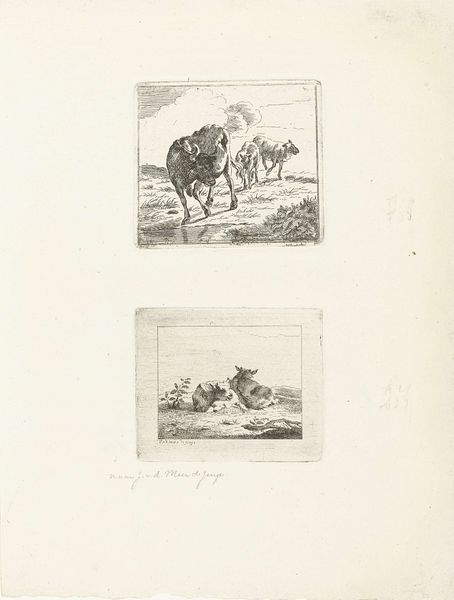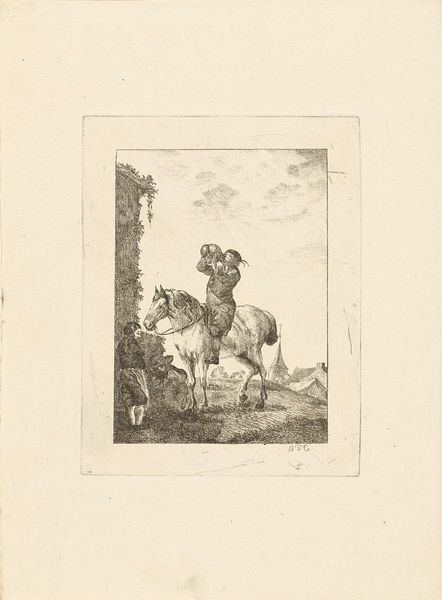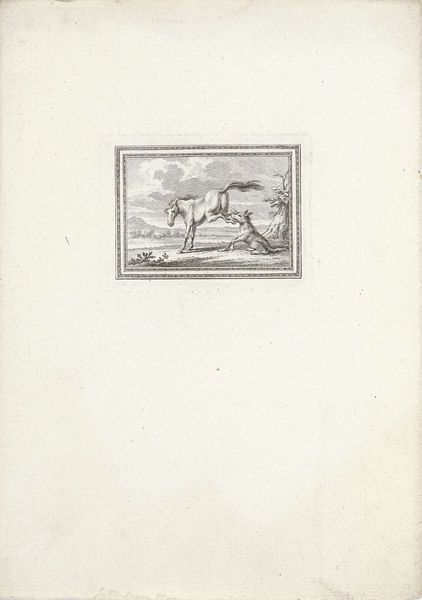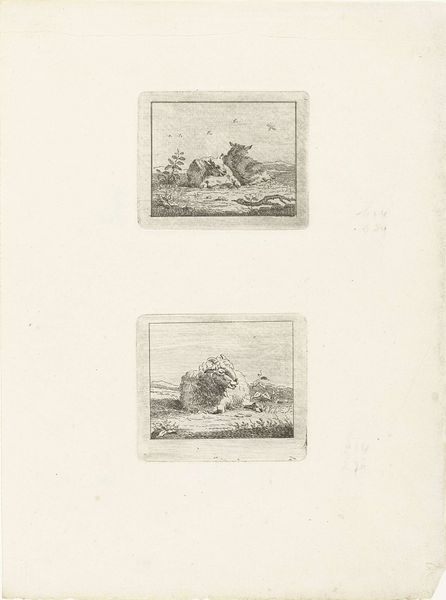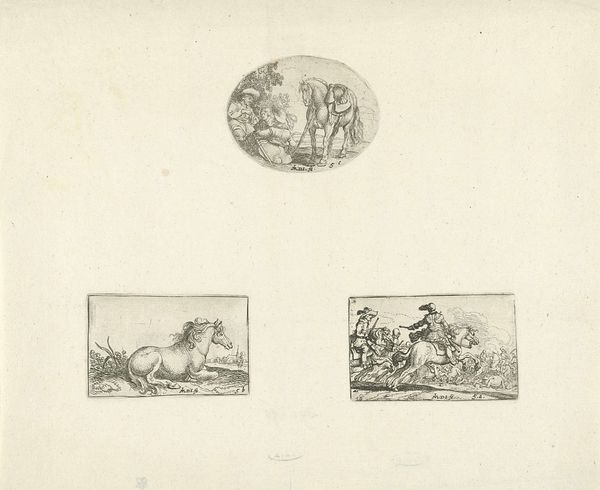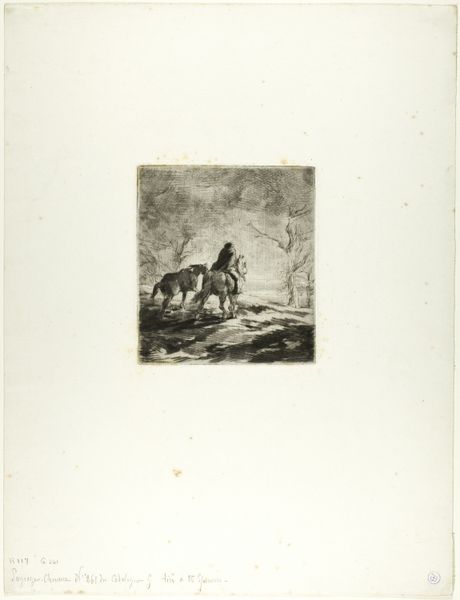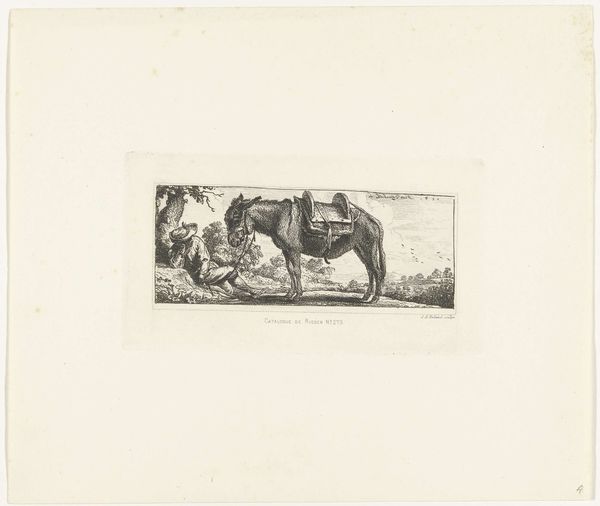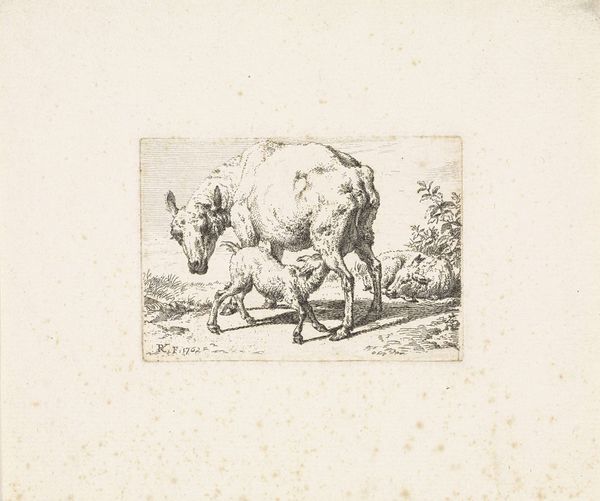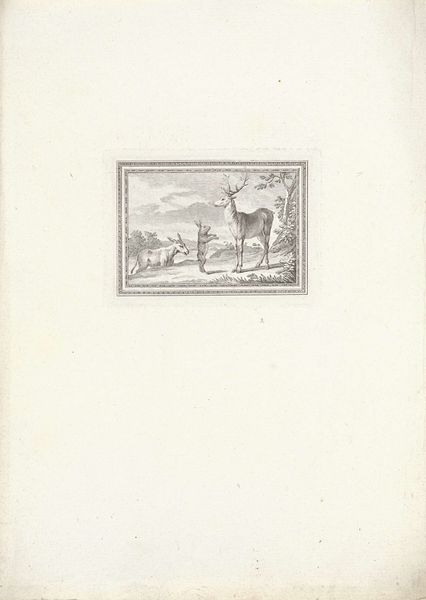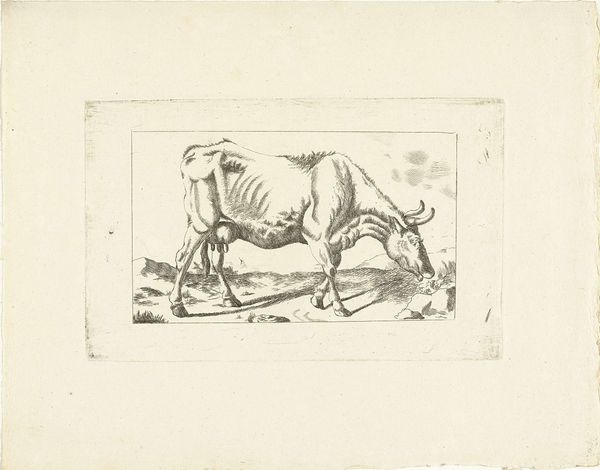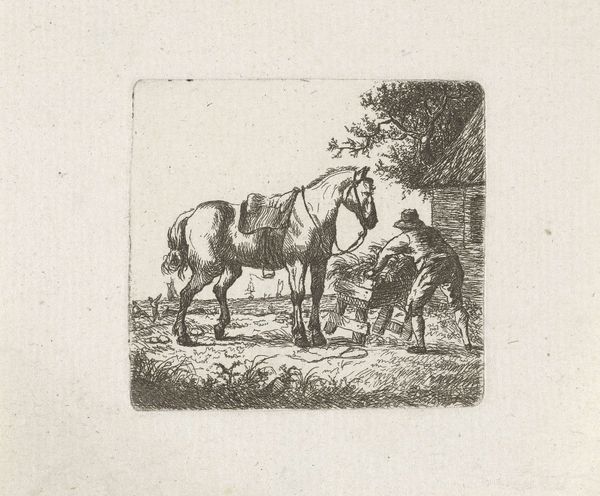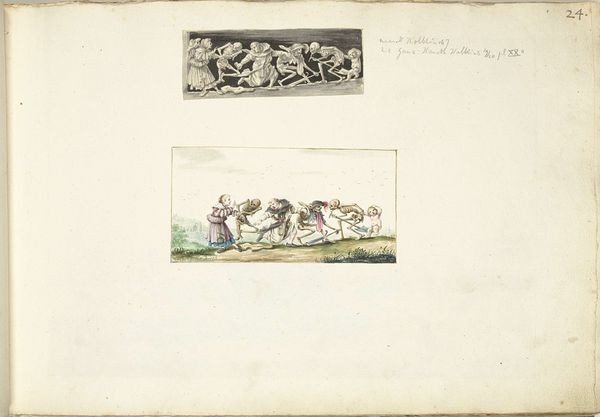
drawing, print, etching
#
drawing
#
animal
# print
#
etching
#
landscape
#
genre-painting
#
realism
Dimensions: height 65 mm, width 83 mm, height 67 mm, width 83 mm
Copyright: Rijks Museum: Open Domain
Curator: Here we have "Two Scenes with Sheep and Goats" by Jan Matthias Cok, dating from 1735 to 1771. The work combines etching and printmaking techniques. Editor: Ah, I like it! It’s like stumbling upon a bucolic daydream, isn’t it? So quaint. The scratchy lines, almost fragile, give it an antique, unassuming aura. Curator: It does conjure a certain idealized simplicity. Cok, though perhaps not a household name today, contributed significantly to the visual vocabulary of Dutch rural life through affordable prints accessible to a wider audience. Think of it in terms of accessibility; domestic imagery made readily available. Editor: Right, almost like the Instagram of the 18th century! Though I bet Cok wasn't angling for likes! But seriously, imagine these hung in modest homes, bringing a little breath of pasture into stuffy rooms. I’m also interested in that tension. Curator: What tension do you detect? Editor: Well, we’ve got these refined etching techniques used to represent what is supposedly everyday life. Was there a real merging, in the viewership, of fine art and rural existence? I always wonder how “real” this rustic simplicity really was for them. Curator: That’s a keen observation. There is always mediation, even a degree of romanticizing. Still, works like this contributed to a sense of shared cultural identity but more, importantly, also to an expansion of the definition of artistic subject matter to include these images. Editor: Good point. It is interesting how the etching elevates these simple scenes to something worthy of attention. The light seems to capture this feeling of an airy, gentle day. But it goes beyond documenting livestock –it's trying to tell a bigger story of the Dutch countryside as an intimate, cultivated place. Curator: Indeed. And considering the reproductive nature of printmaking, the potential reach was far beyond the confines of wealthy patronage, distributing ideals about nature, labor, and national identity. Editor: It's amazing how much we can unpack from something that, on the surface, seems like a simple rendering of some sheep and goats.
Comments
No comments
Be the first to comment and join the conversation on the ultimate creative platform.
